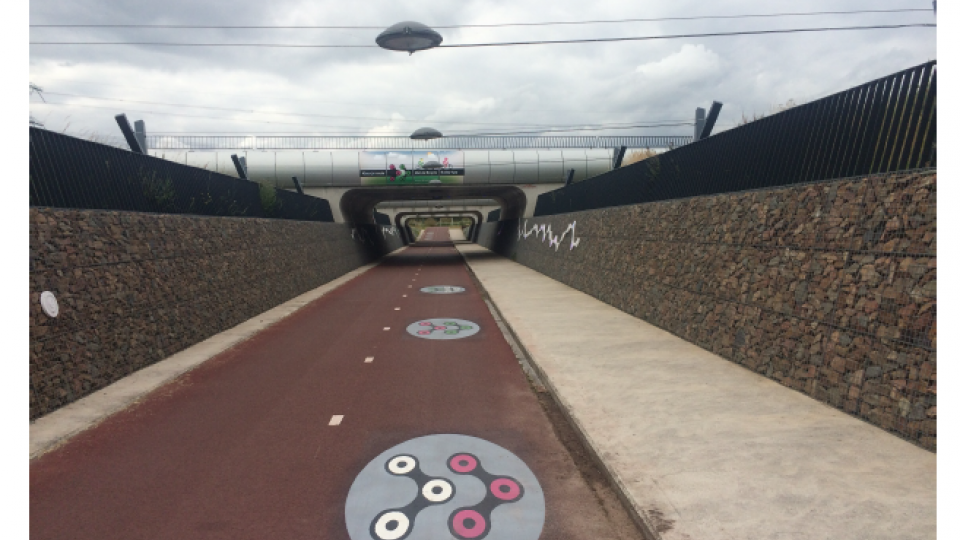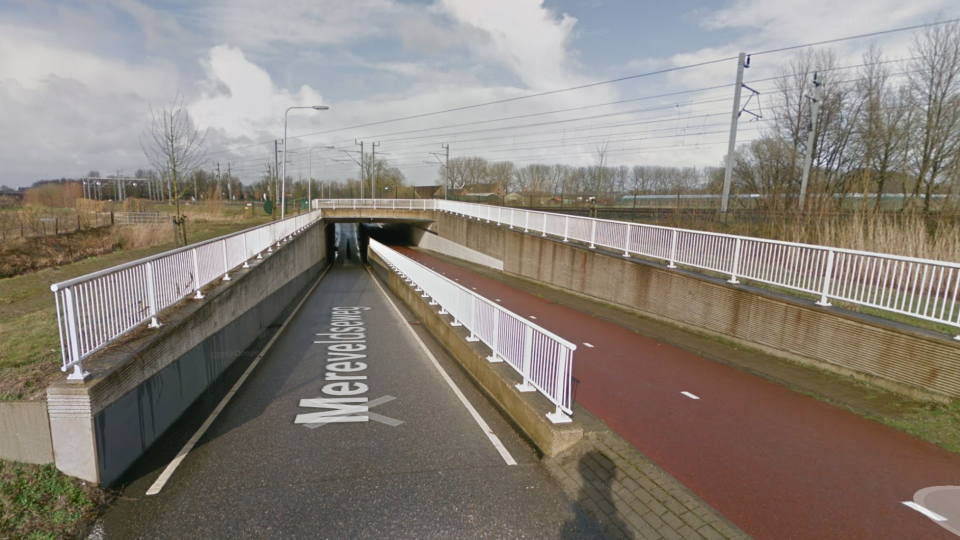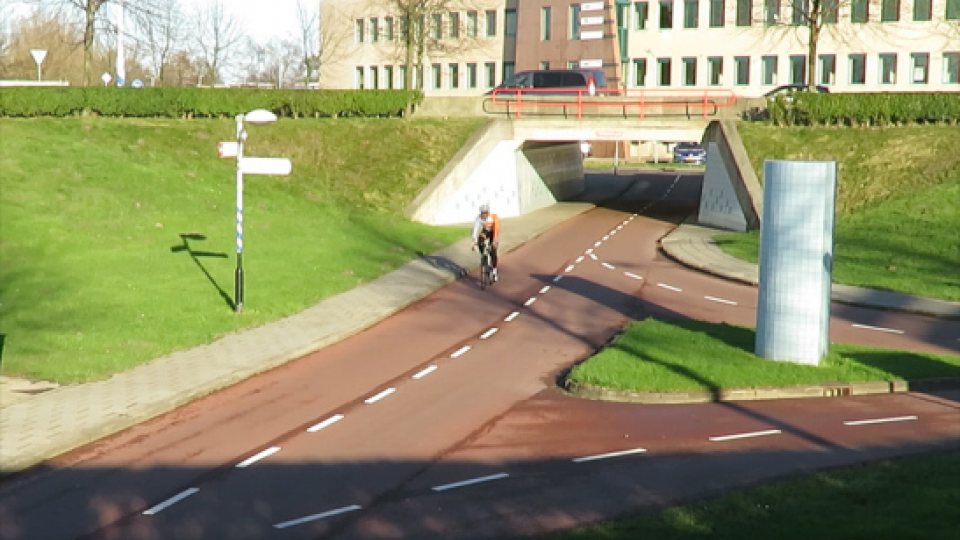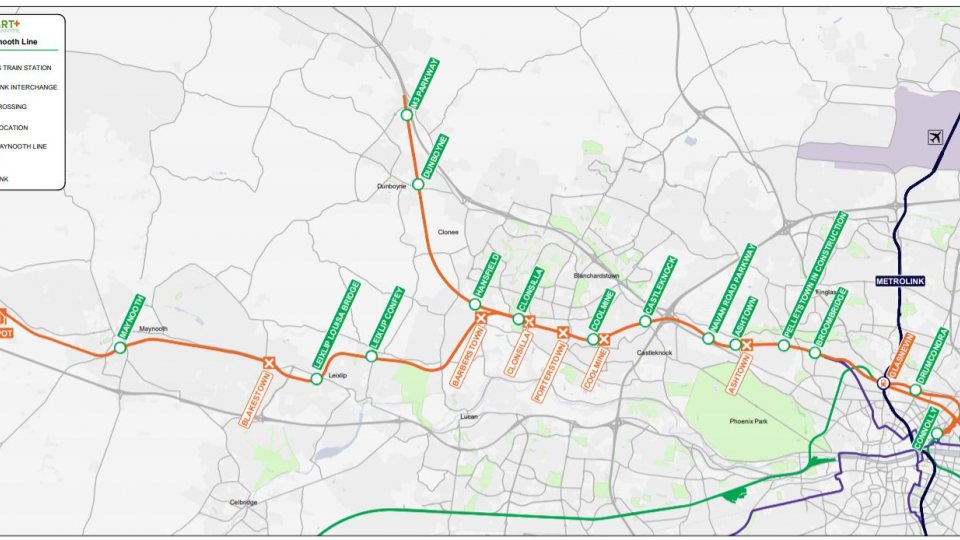DART+ WEST : Our submission on Coolmine-Porterstown-Clonsilla level crossings
INTRODUCTION
We welcome the DART+ West line improvements which will move Dublin’s transport sector to a more sustainable mode of transport in light of the climate emergency. This submission will focus on all level crossings West of Ashtown. There will be similar issues raised from our Ashtown submission. We urge Irish Rail to take into consideration our recommendations as suggested below. GENERAL COMMENTS There are pros and cons for use of either an underpass or a bridge. Fingal Cycling Campaign is recommending an underpass where possible. This submission will focus on the following level crossings Coolmine Porterstown Clonsilla Barberstown Blakestown The benefits of an underpass are that it’s protected from the elements such as wind and rain and cyclists don’t have to deal with an incline to cycle over the royal canal, as they would approaching a bridge. It will be important if the gradient is less than 1:20 (1:5 and even 1:3.5). We have referenced both the Irish guidelines which are limited in their scope for design standards in APPENDIX I and Dutch design standards which have more comprehensive examples in dealing with similar complex junctions in APPENDIX II. We would recommend Irish Rail consider the best practice and design standards from the Netherlands - the leaders in cycling infrastructure design. There are some common questions across all these bridges in that are the cycle paths shared spaces with pedestrians or segregated? We would prefer segregated to avoid collisions.
The main issues with design of tunnels/underpass and bridges for cyclists and pedestrians are
Lighting
gradients (<1:20)
Safety (especially at night time for women)
Line of sight
Segregation
Noise
Priority
CCTV
Passive surveillance
Active surveillance by An Garda Siochana
**SPECIFIC COMMENTS - COOLMINE LEVEL CROSSING ** Our focus will be on Option 1, 3, 6 and 7 as these options have gone through to Phase 2. (Although there is an issue in the report stating that Options 1,3,4 and 6 will go through to Phase 2, We expand further on this issue below) Will there be cycle paths provided on the overbridge on Option 3? Concerns about the entrance to cycle and pedestrian bridge through Coolmine car park. No connectivity and will put people who cycle and pedestrians at risk from conflict with car drivers and walkers commuting across the car park. The car park will need to be redesigned to cater for all modes of transport. This is one of the “5 needs” of design needs for cyclists referenced in the National Cycle Manual. https://www.cyclemanual.ie/manual/thebasics/fiveneeds/ Will the new pedestrian and cycle bridge connect to the Royal canal entrance? Space is limited and might put people in danger trying to join the royal canal from the new pedestrian and cycle bridge on the Northside of the royal canal as the entrance to the Royal canal is situated between Sheepmore lane and the level crossing. Pedestrians and cyclists will have to walk back towards the level crossing to enter the royal canal towpath. How will this area be laid out when the level crossing is closed? Will it become a place for people to park their cars? Placemaking and well thought out design is required to make this location inviting also at night time to make entering the royal canal towpath safe and well lit up for walkers and people who cycle in the evening or commuting from employment for example. In the preliminary option design selection Options 1, 3, 6 and 7 are given green to go ahead to Phase 2 although in the report you state that Options 1, 3, 4 and 6 are going to Phase 2? This doesn’t make sense. Is there a mistake? Can you clarify this please? This means that Option 7 is being dropped which was given green according to the MCA criteria and Option 4 which was red is going instead to Phase 2? This is really important for people who cycle and walk as Option 7 is not being considered and it’s a walking and cycling bridge. We have attached the preliminary options report below.
SPECIFIC COMMENTS - PORTERSTOWN LEVEL CROSSING
The emerging preferred option in the Executive summary report mentions Option 2 as the preferred option for Porterstown level crossing. It is not clear why this option is selected in either report? Can you clarify this, please? From the preliminary assessment report, the MCA shows that Option 1 is green for all criteria but Option 2 is the preferred option in the Executive summary report. Can you explain your decision for this, please? Although you do mention that all Options from 1 to 4 will go to Phase 2.
Option 3 looks like the best option purely from sightlines and the ability to maintain speed and momentum which makes this option more attractive than the nested design in the other options provided. It also has the ability to reduce the gradient to <1:5 to possibly <1:3.5 which will make it easier again to cross for people who cycle or parents with cargo bikes and less well able-bodied people. Although it might have an impact on the sight and heritage of Kennan bridge when built.
Why was a tunnel/underpass not considered for this level crossing?
Option 1 would be a significant detour to the hundreds of students and parents crossing this location currently at Kennan bridge for both via the Royal Canal from the west and north from Clonsilla Village..
There is an SHD development under consultation with An Bord Pleanala for the Old porterstown school. How will this affect your plans?
Have you considered the volume increase in pedestrians with the new Kellystown development which is out to consultation at the moment with Fingal Co Council? An underpass connecting the Royal Canal and Kellystown and Scoil Choilm Primary school and LCC post-primary would be important here.
What are the approach elevations for cycling?
What is the width of the cycle lanes on these bridges in all options?
What is the width of the pedestrian path (5m shared walking/cycling path, assuming 1.5m per the direction of cycle lane and 2m pedestrian)
Is it a shared pedestrian and cycle bridge?
How will the entrance to the bridge for cycling and pedestrian work with the access and egress point for the entrance to St Mochtas Football club? Both locations are very close to each other and there is a possibility of pedestrians and cyclists coming down of the bridge in front of vehicles exiting the football club.
In the image above the old Porterstown school is at pre-application with An Bord Pleanala and could possibly be given planning permission for apartments. How will this work with the bridge designed into this location? Case reference 307464 Old schoolhouse site
In summary, it would be nice to get more detailed maps and designs for all Options on Phase 2. If an underpass option could be considered it would be welcome by Fingal Cycling Campaign
SPECIFIC COMMENTS - CLONSILLA LEVEL CROSSING
We agree with your assessment of Option 1 as the emerging preferred option as it would be unnecessary to build another road over bridge with new bridges going over the canal east and west of this location. THis would also cause further noise and air pollution along the Royal canal and diminish its tourist potential and enjoyment as a green space Was an underpass/Tunnel considered? What are the approach elevations for cycling? What is the width of the cycle lanes on these bridges in all options? It looks like 5 meters will be a shared space. Ideally, it should be segregated bridges to avoid collisions. What is the width of the pedestrian path (5m shared walking/cycling path, assuming 1.5m per the direction of cycle lane and 2m pedestrian) Does the new bridge account for the Kellystown development, which would see a roundabout placed further down the present road to Beechpark and the entrance to Luttrellstown Castle
SPECIFIC COMMENTS - BARBERSTOWN LEVEL CROSSING
It’s concerning that there is no separate cycling and walking bridge for a location that has no developments and is not hindered by space constraints, although the current proposal for Kellystown Road would include a two-way cycle lane both could have two-cycle/pedestrian connections for local access. Are there separate cycle lanes and pedestrian paths in the Options 2 and 4 going to Phase 2? There is an opportunity to extend a bridge from Option 3 to connect to Hansfield train station to increase connectivity in this area and also Westmanstown golf club and the Liffey Valley region.
SPECIFIC COMMENTS - BLAKESTOWN LEVEL CROSSING
We would recommend proceeding with a cycling and walking bridge going to Phase 2 as it is mentioned in the preferred options to close this crossing completely. This would be unfortunate from a cycling and walking perspective and reduces connectivity for people who want to cycle and walk in quiet locations and provides better options. We would recommend an underpass is a viable option for the Blakestown crossing.
CONCLUSION
Fingal Cycling Campaign welcomes the DART+ West plans. We are excited to see the plans put forward by Irish Rail. We have some concerns around the design standards that will be used. The current Irish design standards are not of a high quality and lack detail. So we would stress highly that it is pointless using these standards as a reference or guide as they are below par and unacceptable in our view. We would recommend Irish rail take on board our points referenced and also highly stress to look further afield outside Ireland to other countries who have expertise in this area for many decades such as the Dutch design standards for best practice that will help cycling for all ages and abilities and future proof this design for generations. We have attached a snippet of guidance from the Design manual for urban cycling traffic [CROW] in our submission which reiterates many of our points. We understand it is at an early design stage but are very concerned about cycling and pedestrian surveys taken only on one day for this initial phase of this design and will be a factor in not building high quality infrastructure (See Appendix III).
Help us do more for cycling in Dublin by becoming a member!




